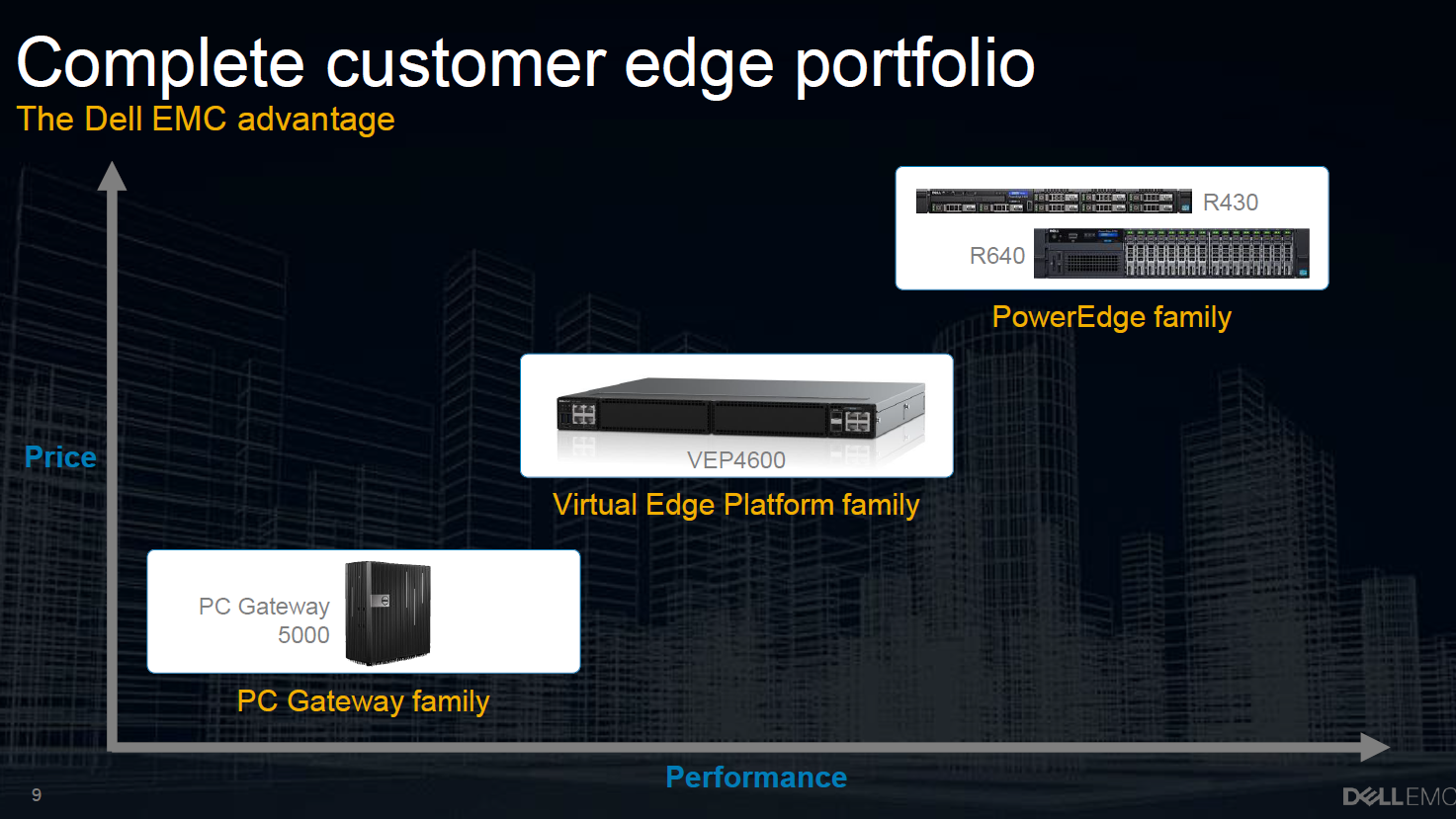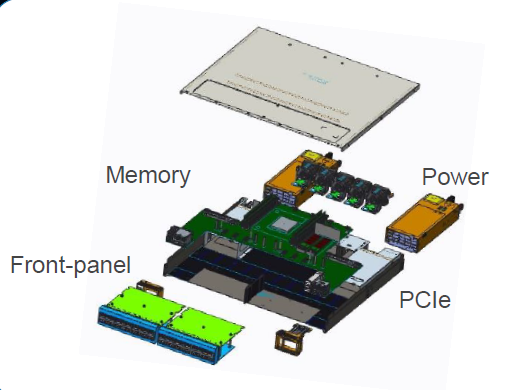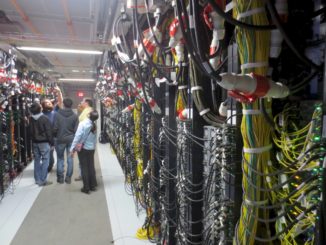
Computing resources – including storage and networking – are continuing their march toward the network edge, drawn like a magnet to the rapidly proliferating connected devices in the world and the huge amounts of data that they’re generating that need to be collected, processed and analyzed.
As we’ve talked about here at The Next Platform over the past few months, the distributed nature of computing, fueled by such drivers as the cloud, the Internet of Things (IoT) and greater mobility, and the demand for capabilities like artificial intelligence (AI), machine learning and analytics to manage the data call for moving more infrastructure and software out of central datacenters and to the edge of the network. The rising costs in money and bandwidth in sending all traffic back to the datacenter are unsustainable, not with the increasing amounts of traffic that would need to make the journey and not with the amount of resources and effort vendors are putting in to build product portfolios that can bring the computing capabilities to the edge.
However, what all that will look like is still coming into focus. It’s rapidly moving past gateways to include servers, networking and storage, automation software and technologies like machine learning to enable faster crunching of the data, driving analytics and sorting through the data to determine what can be processed at the edge, what needs to be sent back over the datacenter and what can be let go. Vendors like Dell EMC, Cisco and Juniper are putting a lot of focus on enabling networks to handle the new and growing amounts of traffic and to deliver to an increasingly mobile workforce a connectivity experience that is equal to that in their corporate headquarters, whether they’re in an enterprise’s branch office, at home or one the road.
“What’s playing out now is that the users are moving around all which ways, and different devices – wired, wireless, who knows where – and they’re increasingly accessing applications that the majority of which are not on-prem,” Jeffrey Baher, director of product and technical marketing for Dell EMC’s Networking and Service Providers Solutions unit, told The Next Platform. “The bottom line is, the traffic profiles have changed, and the WAN has got to grow up and get to the next level. It needs to grow up and get to the next level in terms of performance and is effectively now the LAN. People are expecting the local area experience regardless of whether you’re in Starbucks or at home or at work. There’s no excuse, ‘I’ll send this to you when I get to my office because I don’t have enough bandwidth.’ It wasn’t that long when that was the issue, but now the expectation is that wherever I jack in – wired to wireless – I’m going to connect you to the Azure stack, AWS or whatever I need to do, and it won’t matter, and I won’t feel the pain of being wherever I am. And the workloads have moved around a lot, too. They’re very distributed, so now we need more software that can figure out where the user is, where the workload is and what’s the right path. It doesn’t make for me, here in Santa Clara, to have my traffic go to Texas, headquarters of Dell, to then get it routed back out when you realize that it’s moving into the cloud [or] to Box.”
Dell EMC has been aggressive in pushing its technology to the edge. The company for several years has offered Intel-powered gateways designed to bring analytics, security and intelligence closer to IoT devices that are used in a broad array of industries, from manufacturing to agriculture. The gateways connect wired and wireless systems, aggregate and analyzes data, and then sends useful data to the cloud or datacenter. The vendor also includes the dense PowerEdge R430 and R640 systems in its edge portfolio. Both are 1U, two-socket systems running Intel chips and designed to fit in space-constrained environments, including datacenters and private clouds. The company this week is unveiling the Virtual Edge Platform (VEP) 4600, which leverages Dell EMC’s open networking strategy inside an Intel-powered universal customer premises equipment (uCPE) device that is designed to handle multiple workloads and move large numbers of packets.
Dell EMC more than four years ago launched its Open Networking unit to address the growing software-defined networking (SDN) trend. SDN and network-functions virtualization (NFV) decoupled the network control plane and various networking tasks like load balancing and routing from the underlying hardware and put it into software. This led many enterprises and service providers to look to low-cost white box gear from ODMs to run their networking software. Dell EMC and other established OEMs, including Juniper and Hewlett Packard Enterprise, started developing branded networking hardware that could run not only their software but also that of other vendors – for Dell EMC, that includes Big Switch Networks and Pluribus Networks. This hardware cost less than their traditional systems, but more than the ODMs’, but also came with support and services.
The VEP4600 brings in similar elements. It’s essentially a 1U network-oriented server that is powered by Intel’s “Skylake” Xeon D-2100 processor (up to 16 cores) that the chip maker rolled out earlier this year and aimed at the edge, not only to grow its presence there but also as a bulwark against Arm-based processors in the space. The chip is optimized for virtual networking and software-define environments, and includes Intel’s QuickAssist technology to accelerate encryption and DPDK (data plane development kit) to speed up packet forwarding. Having those capabilities was important to Dell EMC from price point, power efficiency and design perspectives, Baher said.
“What’s happened so far is that with a traditional off-the-shelf server, you had to add a couple of things in order to get it optimized for packet acceleration,” he said, adding that features like QuickAssist and DPDK were separate entities. “Now it’s integrated right into the chip, some of these capabilities that otherwise would have been a PCI card or accelerator card. That gets to more of a design and price point. When you integrate this, it gives you a price and power benefit as well.”
The system includes up to 128GB of memory and two 10 Gigabit Ethernet ports, and according to Dell EMC, can deliver twice the packet processing and improvement in memory bandwidth and four times the memory capacity of traditional systems.
Dell EMC will offer validated systems running from SD-WAN vendors Silver Peak, VeloCloud (which was bought last year by VMware, which is majority owned by Dell Technologies) and Versa Networks. It expands the options of software available to run on the hardware, Baher said.
“There’s this need now for a lot more software that can be placed at the edges of the branch and enterprise,” he said. “You need [the software] to sit on some kind of platform that is designed to move packets quickly. You’d like those to be independent decisions, and because software is really containers or VMs [virtual machines] running in a virtual environment, it’s really kind of a compute or server kind of model that I’m trying to load on top of a box that’s going to move packets in and out. … It needs to kind of look like a networking box, but it needs the extensibility of a server, but I just don’t want to have a server there, so there’s that need for what a universal CPE platform would be. When you crack the hood, it’s really an Intel system, but when you put the hood back on it, it looks like a router.”







The Dell EMC VEP provides next-generation access to the network via SD-WAN. By enhancing WAN operations and economics, service providers and enterprise customers can drive growth, strengthen competitive differentiation and improve the end-user experience.
Organizations positioning and managing real networks are struggling with real and practical issues. Dell EMC networking has seen strong growth in its channel business on a global basis.